Black-eyed Susan care and growing guide: expert tips for rudbeckia
Get the best Black-eyed Susans in your garden and enjoy late summer color with our expert rudbeckia growing tips

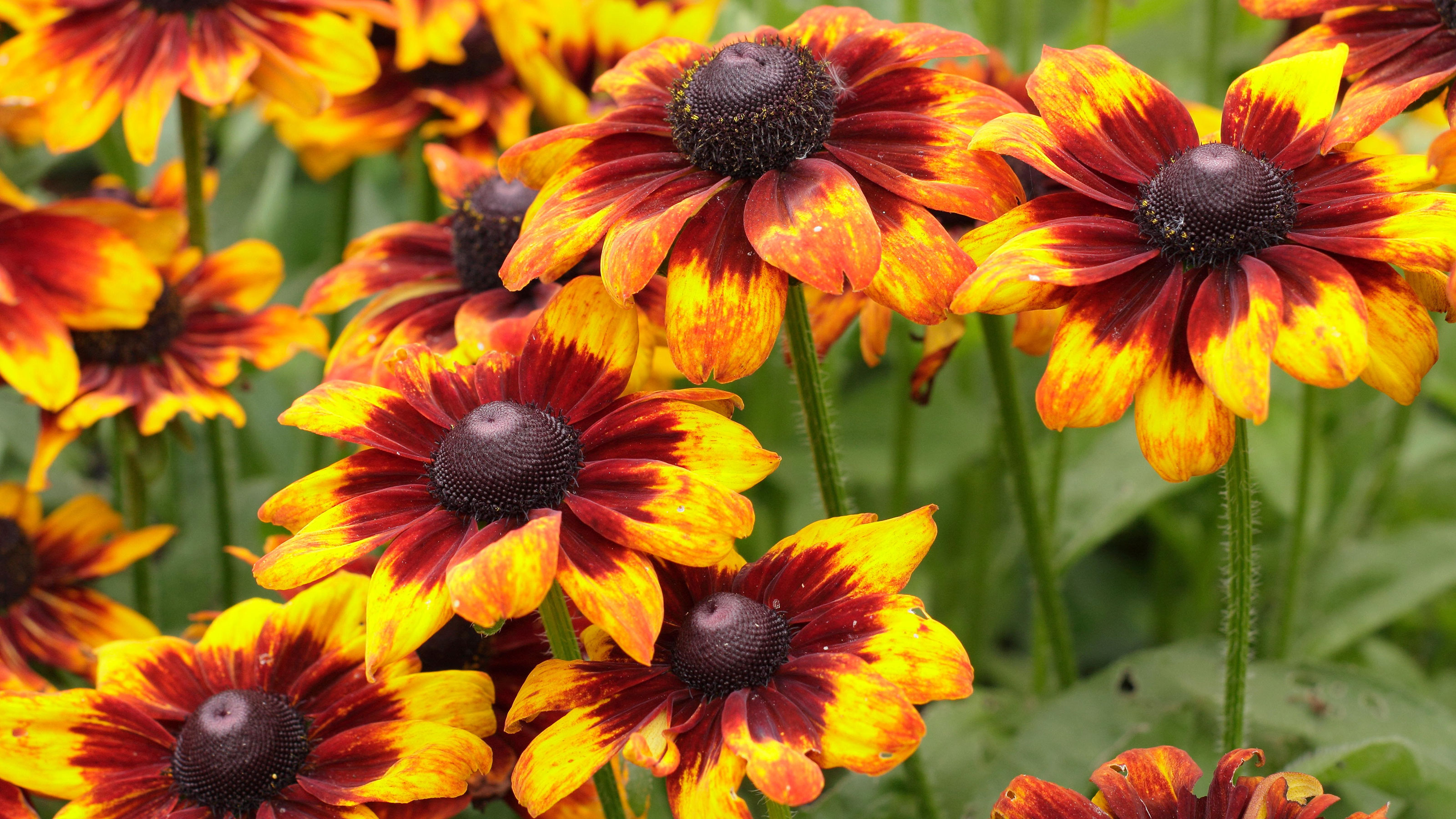
Black-eyed Susan, also known as coneflowers or rudbeckia, feature flowers like a large upward-facing daisy with a ring of narrow petals surrounding a striking cone-shaped eye which can be very dark. It's this feature that gives it its common name of Black-eyed Susan.
Individual flowering stems carry one, or perhaps a few, flowers and are held upright emerging through a mounds of rough dark green leaves. Black-eyed Susan come in hardy perennial types and they also come as annuals (sometimes known as Gloriosa daisies).
These summer and autumn flowering plants are usually yellow, although red-flowered varieties are now available along with a variety of mahogany, chestnut and russet shades. Some have fully double flowers made up of a large number of petals which hide the cone.
These are all, scientifically speaking, rudbeckia. But there is also another group of hardy perennial flowers that are also known as coneflowers – but these are, scientifically speaking, echinacea. Here, I’m discussing rudbeckias.
The American Horticultural Society appreciates rudbeckia and says: 'Showy yellow daisies valued for their generous production of cone-centered flowerheads late in the season.'
Black-eyed Susan: key facts
- Plant type: Hardy perennial, half hardy annual
- Mature size: 14in-8ft x 12in x 4ft (38cm-2.4m x 30cm x 1.2m)
- Soil type: Fertile, well-drained
- Soil PH: Lightly acid, neural, slightly alkaline
- Time of year to plant: Spring, fall
- Flowering time of year: Summer, fall
- Flower color: Mainly yellow shades plus chestnut, orange and red
- Hardiness zones: USDA Z3-8; RHS H3-7
- Scientific name: Rudbeckia
- Common name: Black-eyed Susan, yellow coneflower, Gloriosa daisy
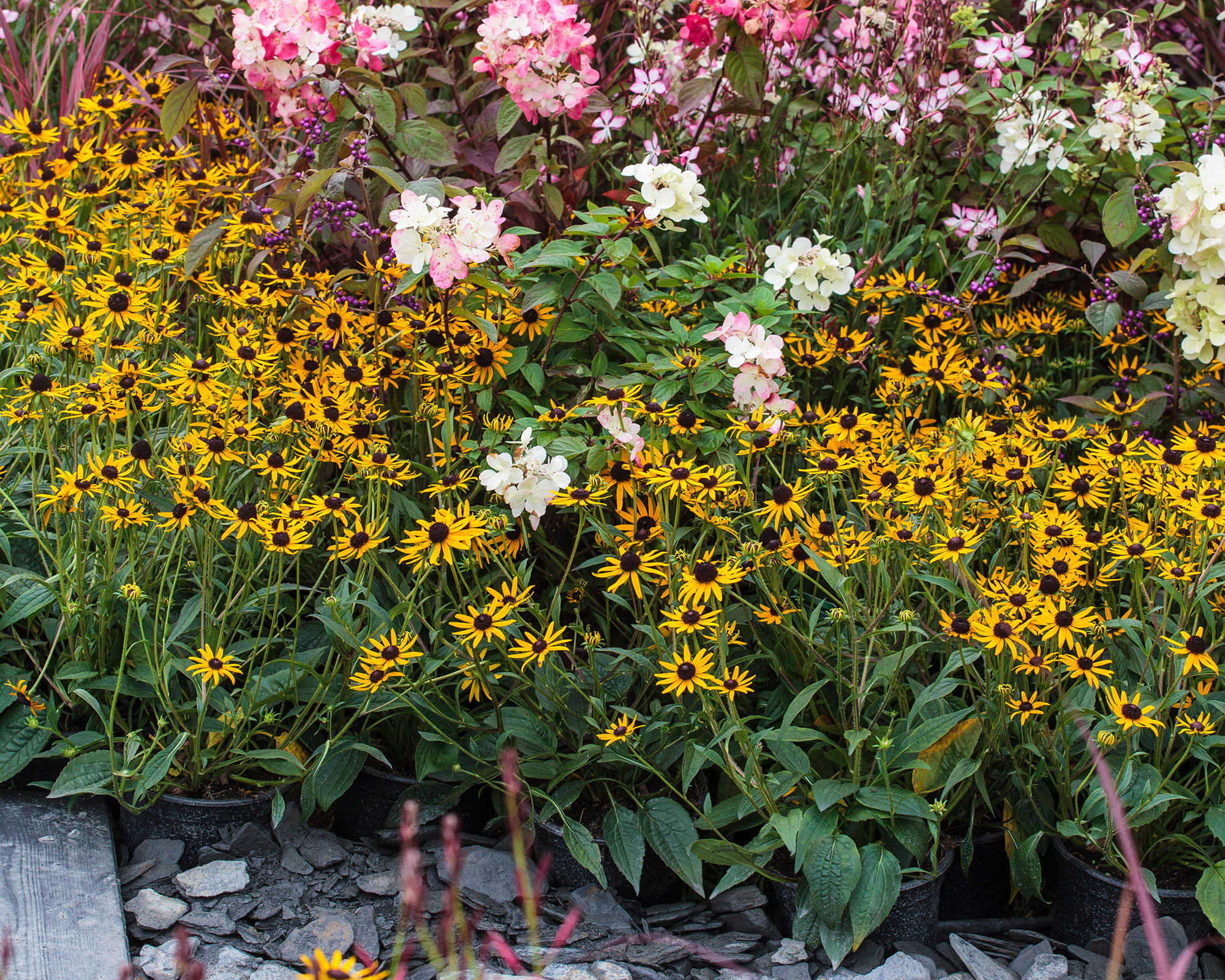
The different kinds of Black-eyed Susan
There are two kinds of Black-eyed Susan you can choose from to brighten up your garden borders and flower bed ideas: perennial coneflowers and annual coneflowers.
Perennial coneflowers, or Black-eyed Susans, are exceptionally frost-hardy plants that reach anything from 16in (40cm) to 8ft (2.4m) in height, depending on the variety, but most come at the more manageable end of the range.
Their yellow daisies come in a range of shades from lemon yellow to deep gold or almost orange, sometimes in two shades, and there are even a few with no petals at all but which feature large, dark, almost black cones.
A few have many petals creating double flowers. Perennial coneflowers are usually bought as plants.
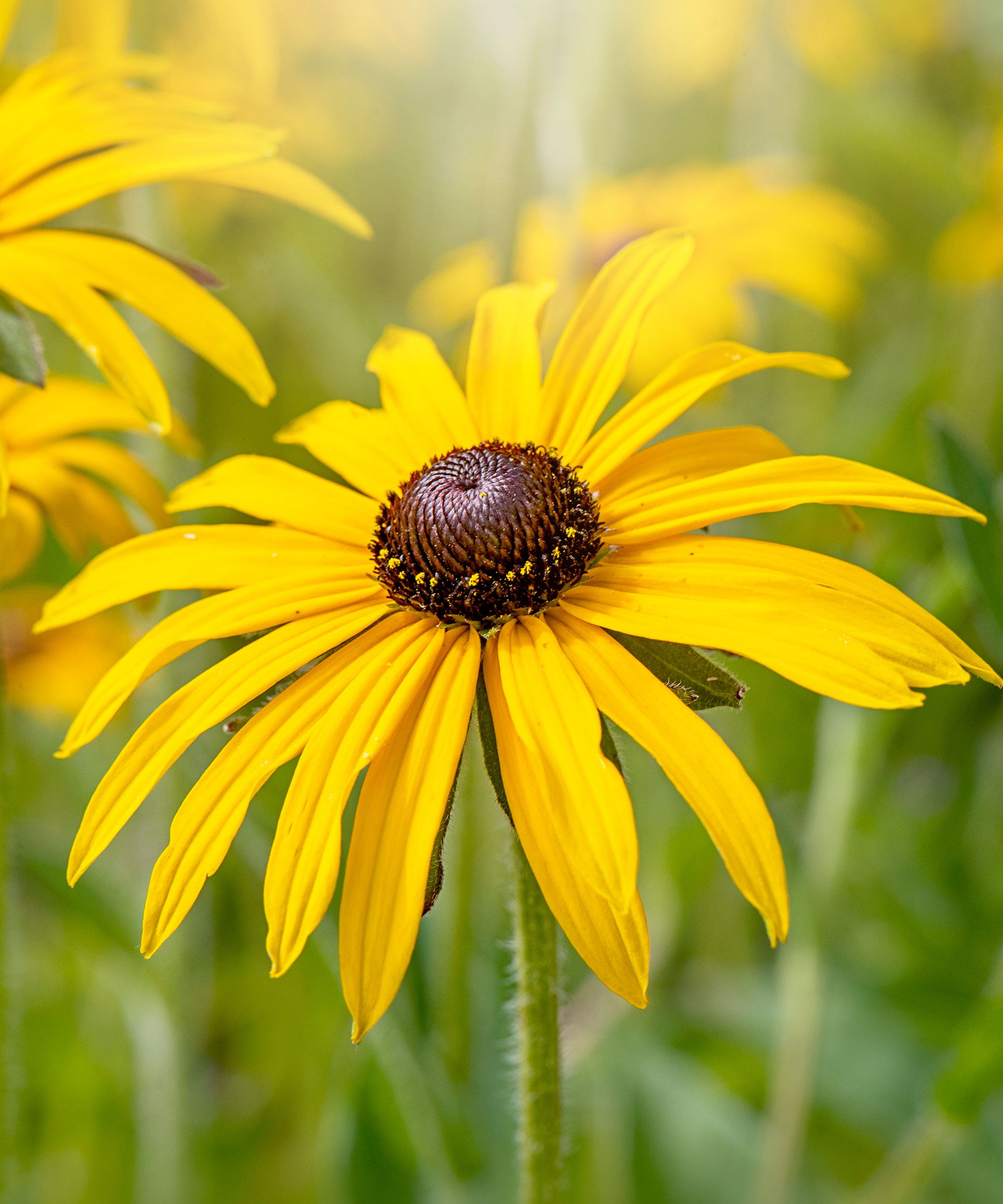
Annual coneflowers (Gloriosa daisies), which are one of the best annual flowers to grow, tend to have larger and often more flamboyant flowers, in a wider range of colors. The flowers of modern varieties can reach 6in (15cm) across.
Traditionally they are yellow flowers, as well as orange, but there are now varieties in a range of sunset shades, plus mahogany and chestnut, terracotta and even red.
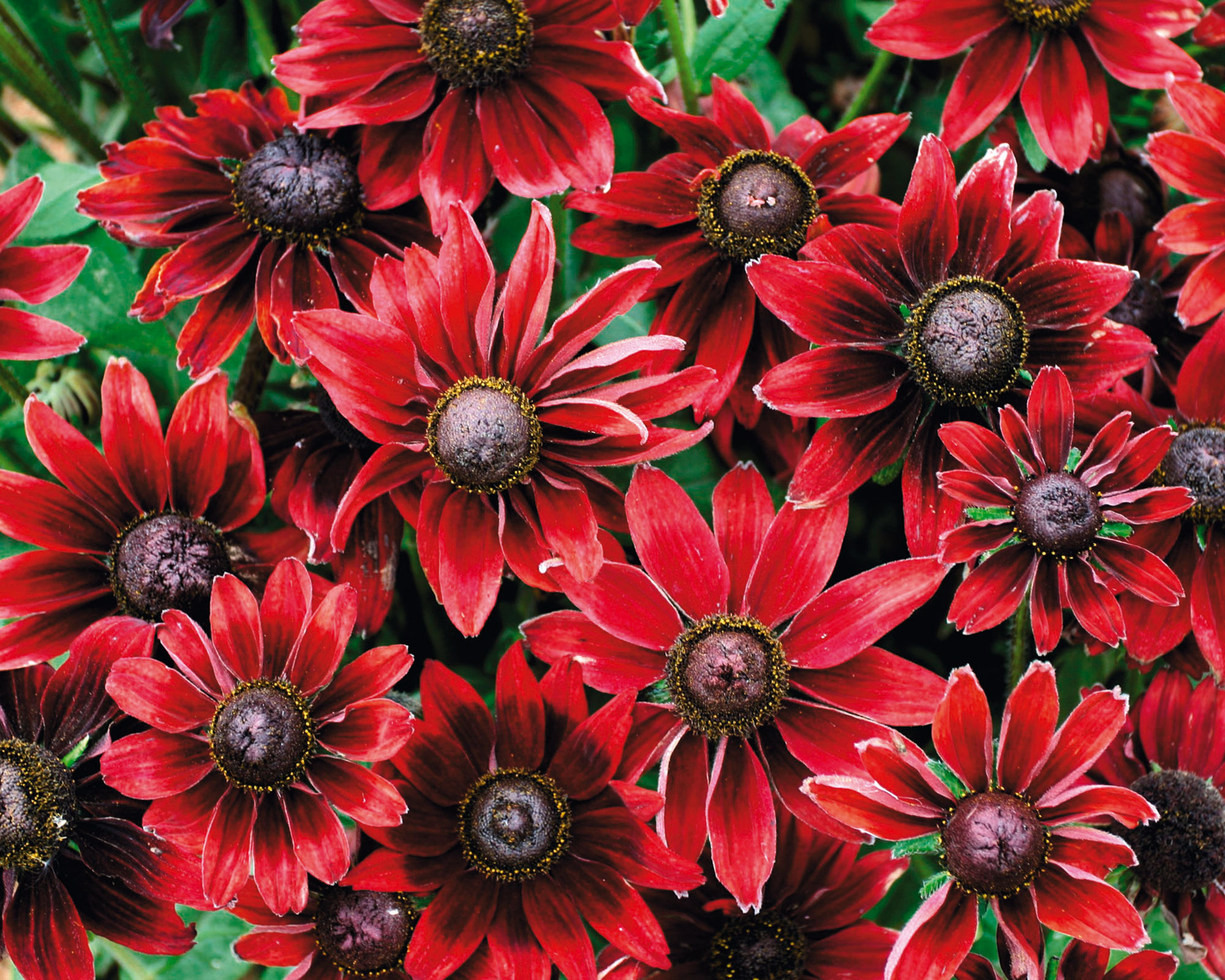
How to choose the right Black-eyed Susan for your plot
There are annual and perennial varieties that are ideal for borders, containers and for cutting.
For borders
For perennial borders, Black-eyed Susans range from huge to tiny. Reaching 8ft (2.4m) and needing thoughtful support, ‘Herbstonne’ [UK] ‘Autumn Sun’ [US] makes a dramatic display, but really does need space.
The indispensable old favorite ‘Goldsturm’, reaches about 3ft (90cm) and the tiny ‘Little Goldstar’ at just 14in (38cm) is ideal for the smallest sunny spaces.
For a super-sunny annual display, ‘Prairie Sun’ is outstanding or try the unusual red-flowered ‘Cherry Brandy’.
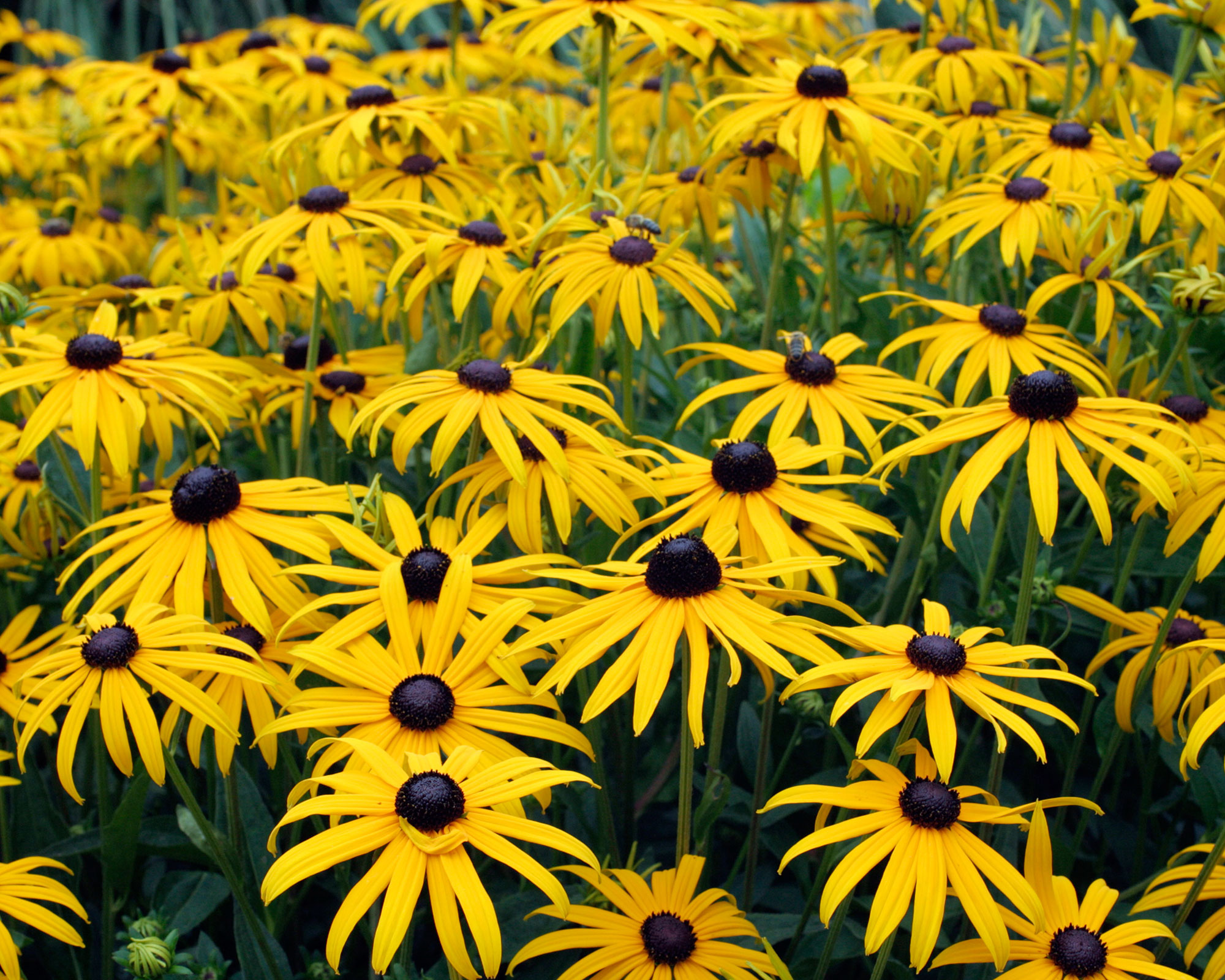
For containers
New for your summer container ideas are the truly spectacular Sunbeckia Series and the SmileyZ Series, which are extra-vigorous, well-branched plants reaching about 2ft (60cm) with flowers up to 6in (across) in a wide range of yellow and mahogany shades. The shortest is the Toto Series, at about 9-12in (23-30cm).
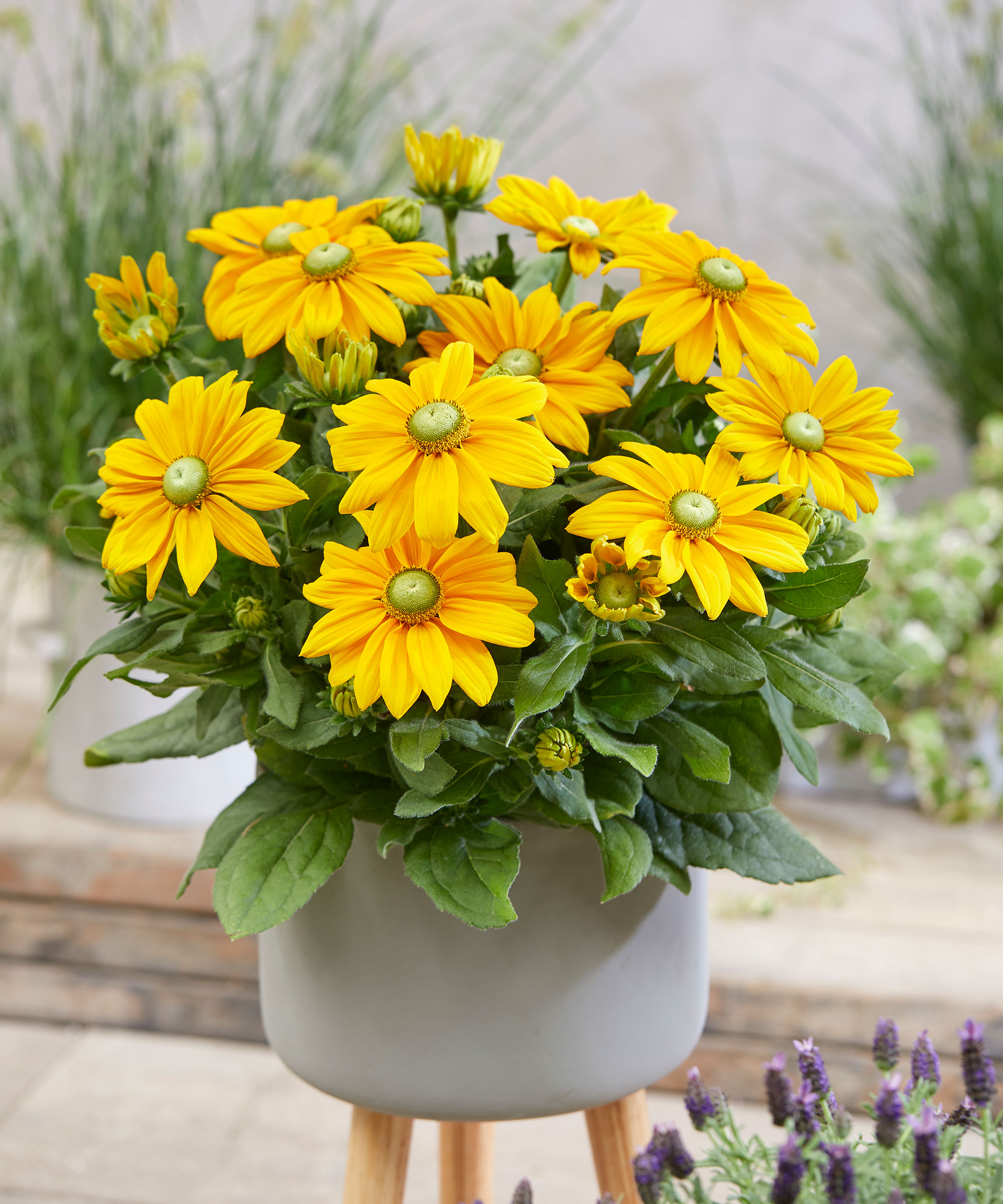
Cut flowers
All the annual and perennial varieties, except the very shortest, are good as cutting garden flowers and will produce a succession of flowers through the summer.
The experts at Bluestone Perennials pick out ‘Prairie Sun’. They say: 'Tall and robust, Rudbeckia ‘Prairie Sun’ shows off their daisy-like blooms with peachy orange petals that wash to yellow at the tips surrounding green centers. Great for cutting.'
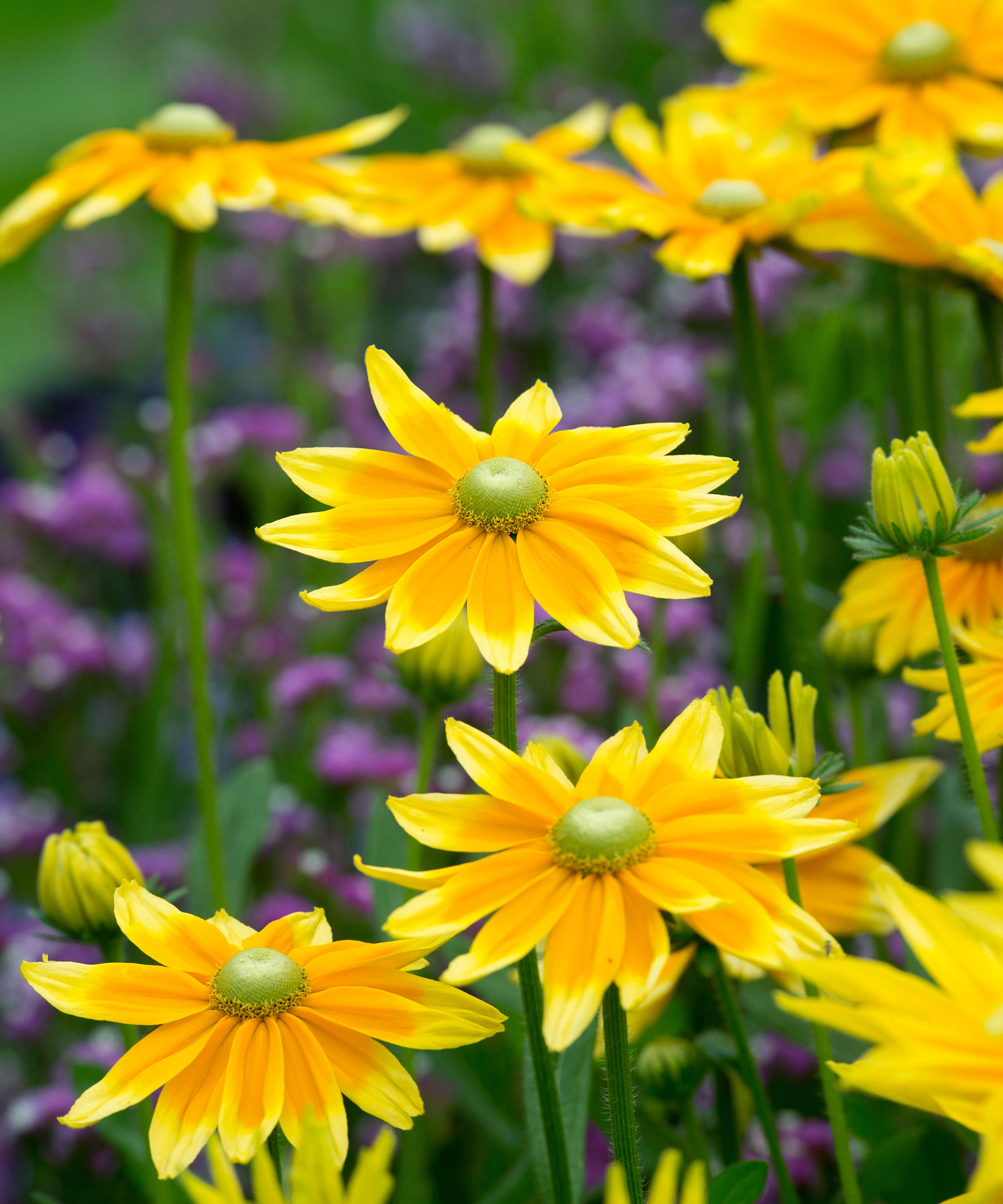
When, where and how to plant Black-eyed Susan
Hardy perennial Black-eyed Susan can be planted at almost any time that the soil is not parched, frozen or waterlogged. Plant them in fall, as they go dormant, in spring when starting into growth and smaller varieties can also be planted in flower.
Taller varieties are best planted while dormant or when just starting into growth as large plants in flower, and with a mass of foliage, are very difficult to manage.
Sow seeds in spring in seed starter kits (available from Amazon), placed in a warm position in good light, a sunroom is a good location or a greenhouse. The young plants can go into the ground or into garden planters when the last frost has passed in your area.
Plant Black-eyed Susan in full sun, in any fertile and well-drained soil or in containers of fresh potting soil. Use a trowel to make a planting hole and plant in the usual way, no special techniques are necessary.

Black-eyed Susan care tips
There are a few things you can do to keep your Black-eyed Susan plants happy.
- Watering plants well after planting helps them get established. Keep the plants damp until they settle in, they can take up a great deal of moisture quickly.
- Although shorter varieties are self-supporting, and one or two taller varieties also, many taller types will need support. Use climbing plant supports such as canes and twine or pea-and-bean netting stretched horizontally to keep the flowering stems upright.
- Deadheading flowers regularly will give you a long flowering period. This not only greatly improves the look of the plants but also encourages new flowers to keep coming.
- Problems are few, although powdery mildew may be seen if the roots become too dry and clusters of aphids may appear but these are rarely serious issues.
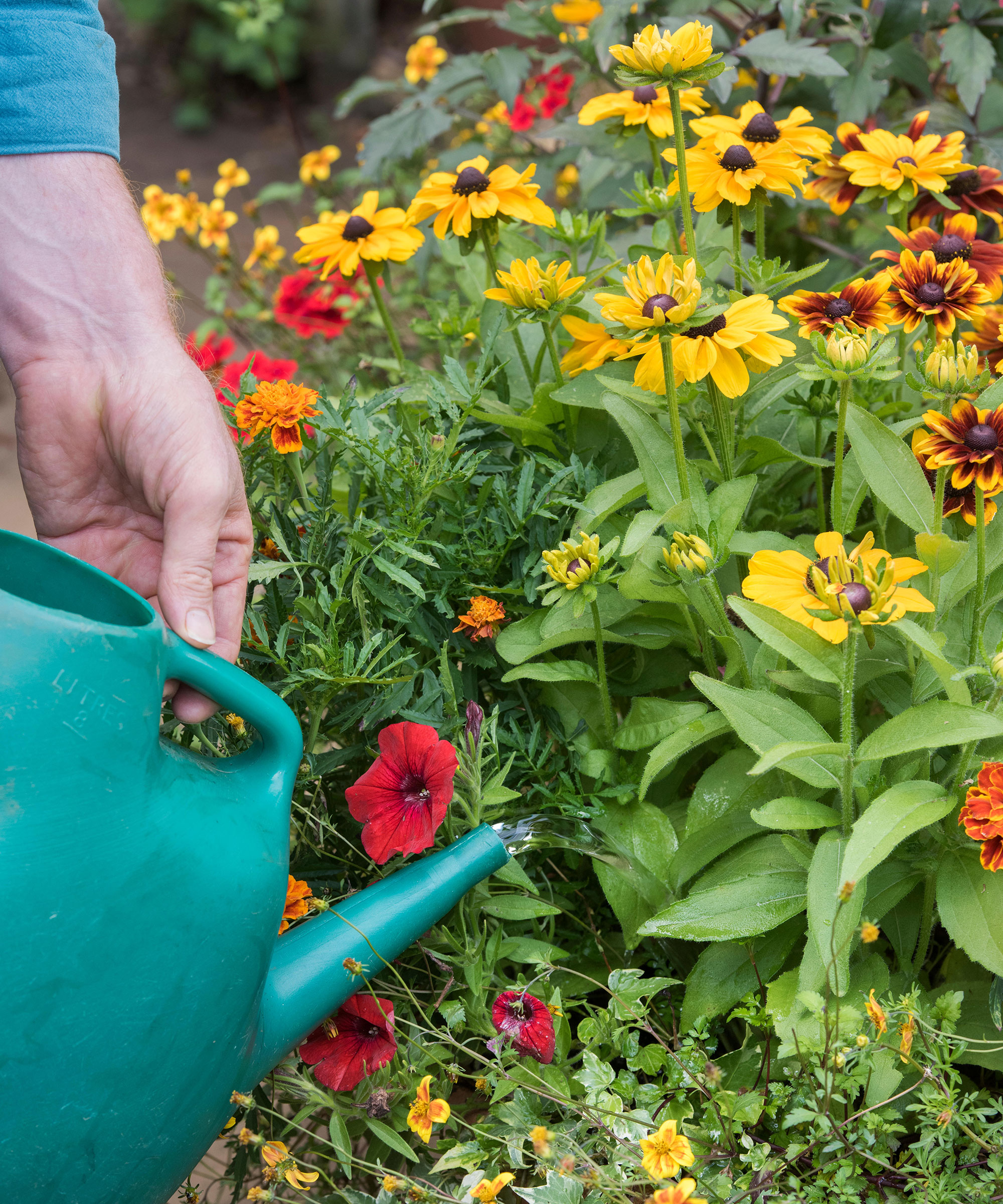
How to make more Black-eyed Susan plants
Perennial coneflowers can be lifted in early spring, pulled apart and healthy pieces replanted in amended soil. They will not mind rough treatment as long as they are planted promptly and not allowed to dry out.
It is also sometimes possible to carefully detach pieces of root, with a shoot attached, from the edge of the clump and these can be potted into fresh potting soil and grown on before planting out.
Annual, and some perennial, rudbeckia can be grown from seeds, but always buy fresh seed from a seed company when growing flowers from seed. It is possible to collect seeds from some Black-eyed Susan plants in the garden, but the results can be patchy. Seeds are not expensive to buy and it pays to start with healthy seed so you can be confident they will develop into the plants you need.
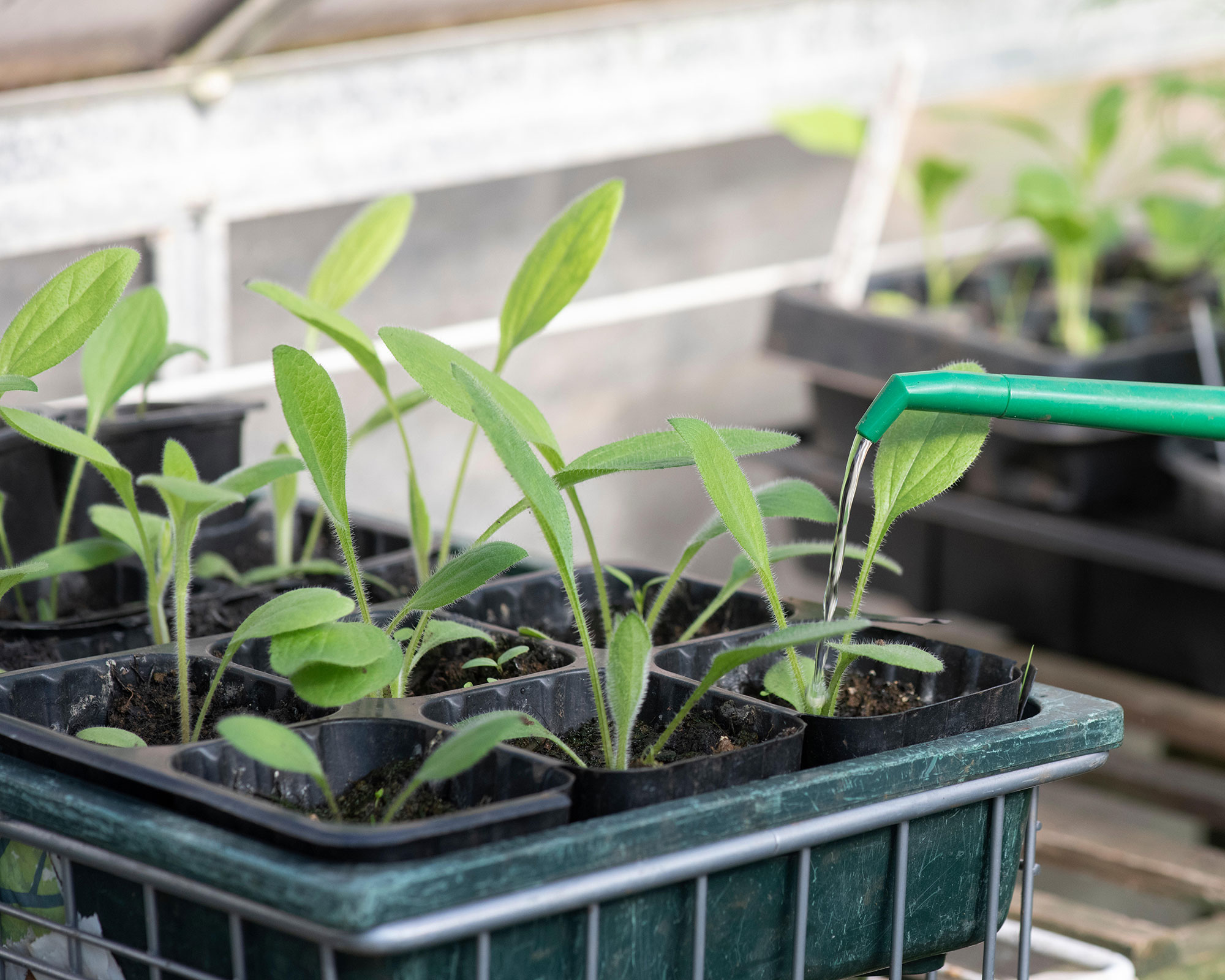
Are coneflowers native?
Yes, rudbeckias are native to all of the United States and much of Canada. In fact, there are 23 different species growing in different parts of the country. They are also sometimes planted to bring summer color along highways or at intersections
Are Black-eyed Susans deer resistant?
Partly, yes. Black-eyed Susans have rough stems and rough rasping foliage that make them a deer-resistant plant. So deer will usually avoid eating them if there is something more palatable nearby.
However, if there are few bland and easy-to-eat plants for them to graze on, they will eat Black-eyed Susans. Fencing is the only way to be sure of protecting your plants from deer, although deer deterrents are sometimes successful.
Does Black-eyed Susan come back every year?
Some Black-eyed Susans come back every year, some do not. You can depend on the hardy perennial types, mostly varieties of Rudbeckia fulgida or the taller Rudbeckia laciniata, coming back year after year. In fact they are some of the most cold tolerant of all perennials, some are hardy to USDA Z3 (RHS H7).
The only thing that may prevent them coming back is bad garden drainage, if the soil is waterlogged in winter they may not survive.
The ones that die at the end of the season, or during the winter, are the annual types, also known as Gloriosa daisies which are grown from seeds each year.
These are mainly varieties of Rudbeckia hirta and are either bought as young plants or grown from seed sown in spring.
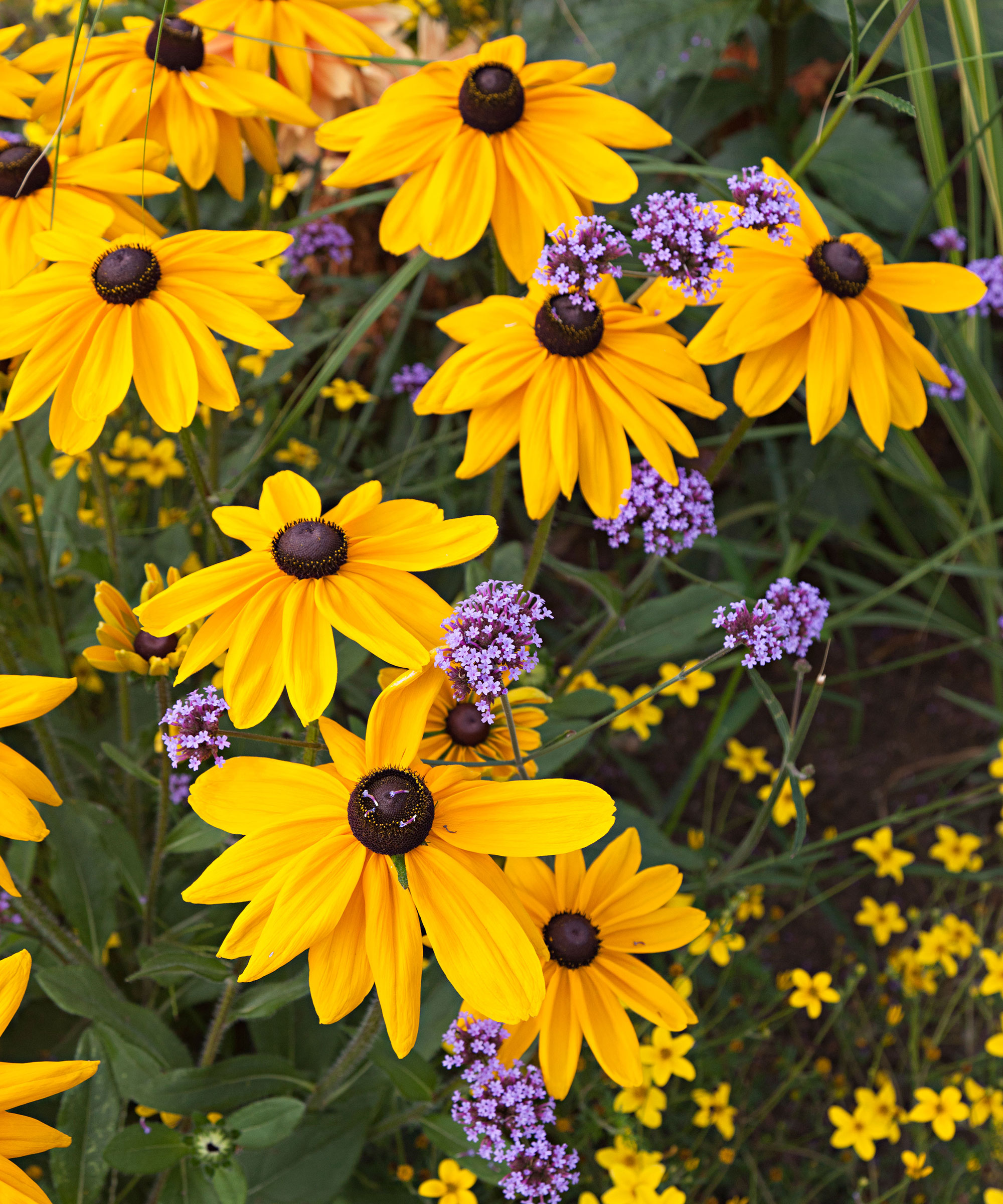
What month do Black-eyed Susans bloom?
Black-eyed Susans are summer and fall flowers, many varieties continuing to bloom for three months.
The most widely grown perennial variety, ‘Goldsturm’, begins to bloom in mid-summer and continues to mid fall, July to October in many areas.
Annual varieties such as ‘Prairie Sun’ also start to bloom in mid-summer and will continue blooming until the plants are frosted.
Regular deadheading always encourages the plants to flower for as long as possible.
My black-eyed Susan has started to go limp and its leaves wilt in the middle of the day. What’s going on?
Your black-eyed Susan is too dry. In well-drained soil types, especially sandy or gravelly soil, the roots can use up the moisture in the soil very quickly and then, in the middle of the day and in the afternoon, when the sun is at its strongest, leaves lose moisture more quickly than the roots can supply it and the plant wilts.
The simplest solution is to dig up the plant in fall or spring, amend the soil with plenty of garden compost or soil conditioner to help retain moisture, then split the plant into healthy pieces and replant.
I cut some black-eyed Susans but the petals started dropping off after only two days. Why?
Unfortunately, it’s the nature of the beast. Black-eyed Susan and other rudbeckias do not last longer than a few days in water.
But, because they look so spectacular when first arranged, many people cut and arrange them for a special occasion, a garden party perhaps, and then put them on the compost heap when they start to look ragged.
It is also usually possible to coax a few extra days out of them by removing all the leaves from the stems, re-cutting the base of the stems immediately before arranging, adding flower food to the water and changing the water every day or two.
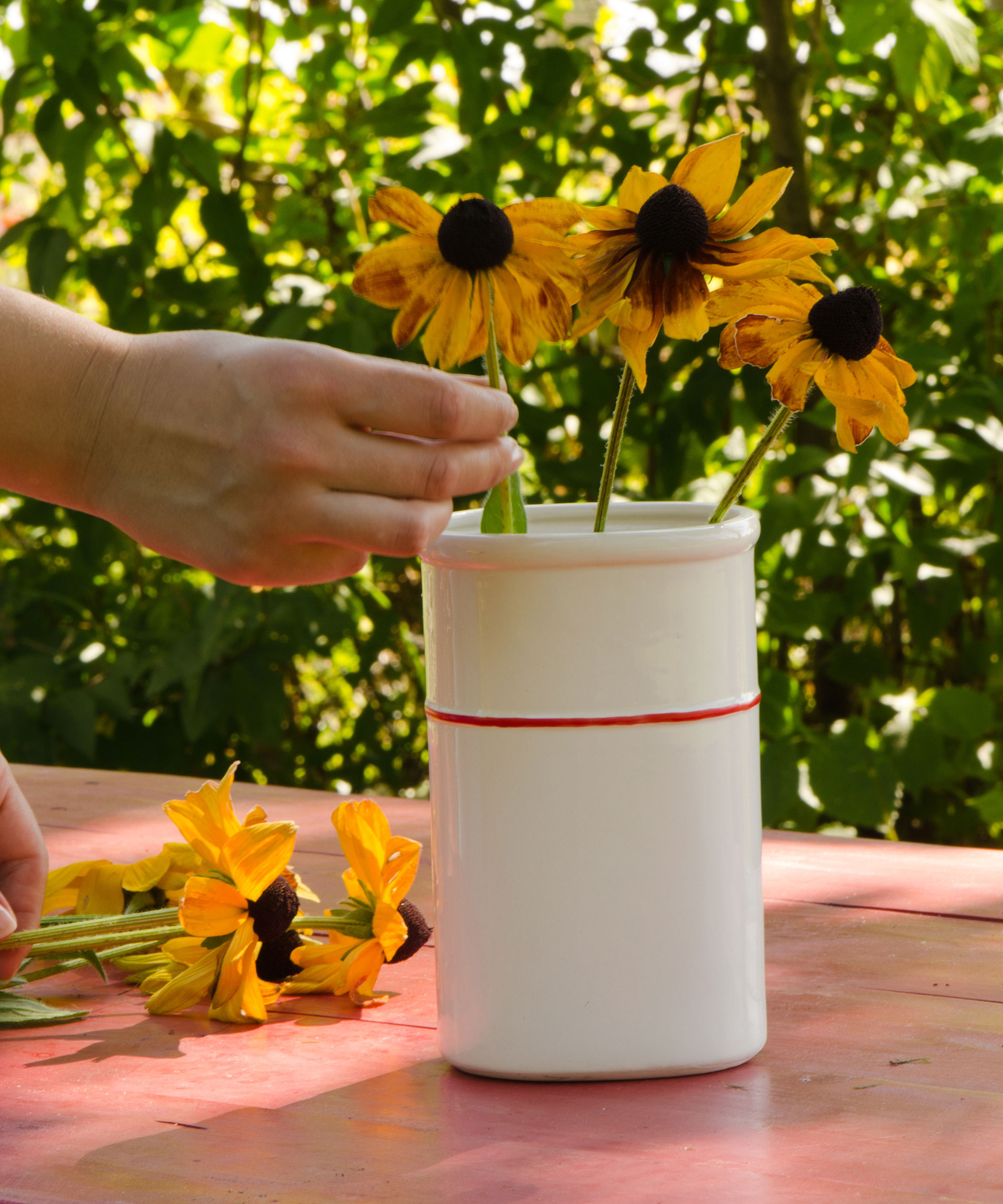
Where to buy black-eyed Susan plants
Both annual and perennial coneflowers can be bought as plants and are one of the flowers that are easy to grow from seed.
Hardy perennial coneflowers, including the always reliable ‘Goldsturm’, are often sold in spring, before flowering, and then in flower in summer at garden centers, retail nurseries and garden departments of DIY stores.
They are also sold by mail order nurseries specializing in perennials and also by general nurseries. Some offer a range of varieties, often differing mainly in the height of the plant at its peak.
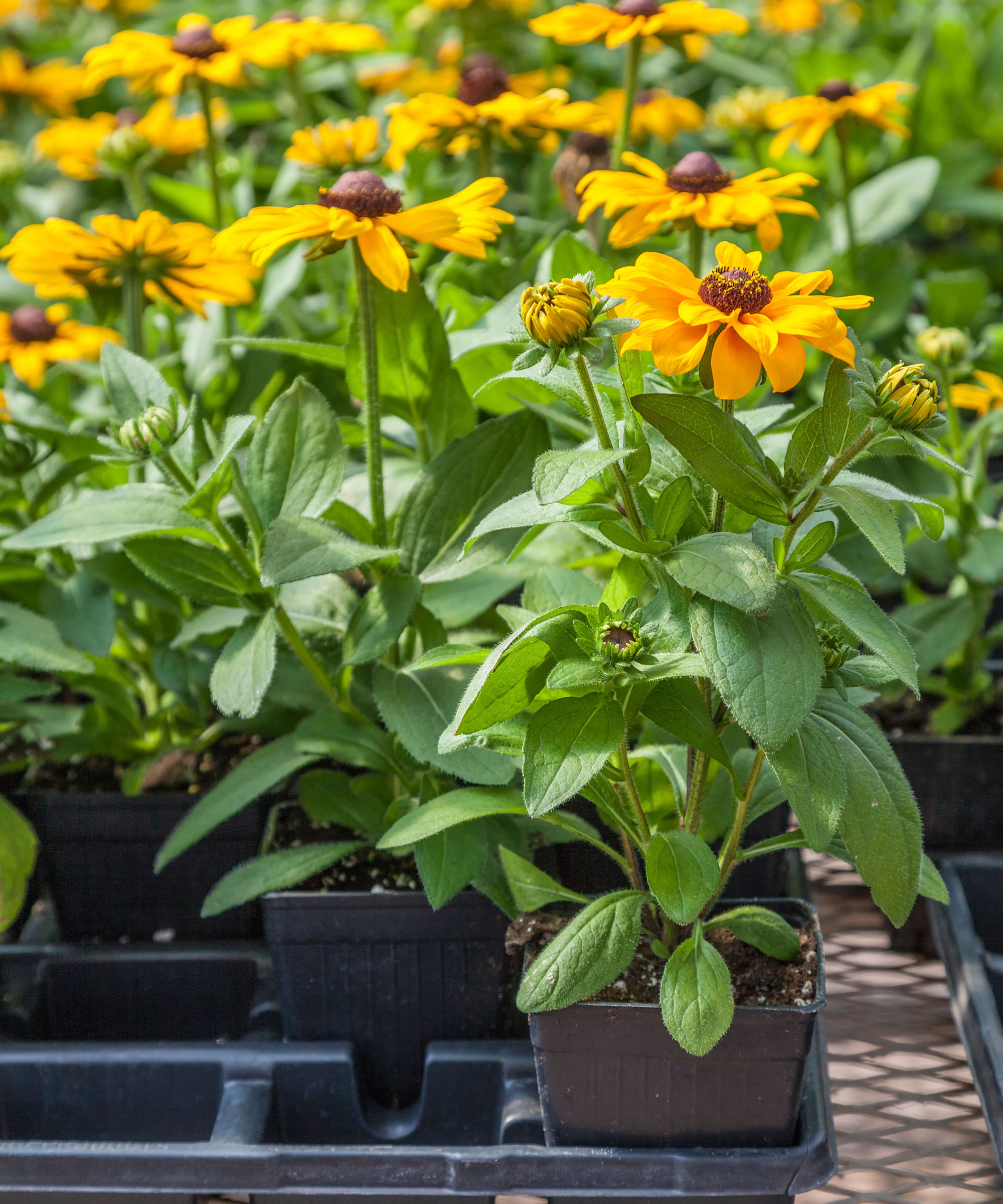
Shop for Black-eyed Susan plants in the US:
- Shop for Black-eyed Susan at Amazon
- Shop for Black-eyed Susan at American Meadows
- Shop for Black-eyed Susan at Bluestone Perennials
- Shop for Black-eyed Susan at Burpee
- Shop for Black-eyed Susan at Lowe's
- Shop for Black-eyed Susan at Monrovia
Shop for Black-eyed Susan plants in the UK:

Graham Rice is a garden writer who has won awards for his work online, and in books and magazines, on both sides of the Atlantic. He is a member of a number of Royal Horticultural Society committees and the recipient of the 2021 Garden Media Guild Lifetime Achievement Award.
